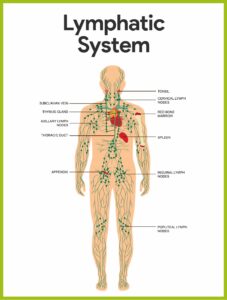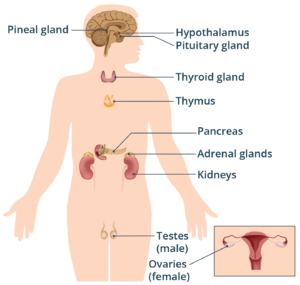LYMPHATIC SYSTEM

The lymphatic system is a drainage system that removes excess fluid from body tissues and return it to the blood stream.
It is actually a subsystem of both the circulatory and immune system. The major purpose of the circulatory system is to bring oxygen and nutrients to body tissues and remove wastes. This exchange happens in the smallest blood vessel called the capillaries.
https://www.highrevenuenetwork.com/b46wpbby?key=b9adcecbfc8ba80c1b7c18d33f424556. Blood plasma containing nutrients moves out of capillaries at the arterial end of capillary beds, while tissues fluid containing wastes reabsorbs back in the venous end.
However, not all of the fluid is drawn back to the blood stream at this point about15% of it is left in the tissues and would cause swelling if accumulated.
This is where the lymphatic system comes into play.
It picks up the excess fluid and returns it to the circulatory system. Unlike the blood circulatory system, which is closed loop, the lymphatic system is one-direction, open-ended network of vessels.
Lymphatic vessels begin as lymphatic capillaries made of over looping and Othello cells. The over looping flaps function as a one-way valve.
When fluid accumulates in the tissues, Interstitial pressure increasing pushing the flaps inward, opening the gaps between cells, allowing fluid to flow in. as pressure inside the capillary increases, the endothelial calls are pressed outward, closing the gaps, thus preventing backflow.
Unlike blood capillaries are so large that they allow bacteria, immune cells such as macrophages, and other large particles to enter.
This makes the lymphatic system a useful way for large particles to reach the blood stream. It is used for example: for the dietary fat absorption in the intestine.
Once inside lymphatic vessels the recovered fluid is called lymph. Lymph flow is enabled by the same force that facilitate flow in the veins
. It goes from lymphatic capillaries to larger and larger lymphatic vessels and eventually drains into blood stream via the subclavian veins.
ENDOCRINE SYSTEM

The human endocrine system consists of following glands which are located all over the human body.
THROID GLANDS:
We have the thyroid glands in the neck which secrete important thyroid hormones which effect nearly all the cells of the body and maintain a proper metabolism of the body cells, behind the thyroid glands we have four yellow parathyroid glands which secrete important hormones, parathormones. These hormones regulate the calcium and vitamin D metabolism in the body. more info athttps://yubloger.com/
Above the kidneys we have the two important adrenal glands which secrete a variety of hormones that effect the metabolism of glucose, electrolytes, as well as they secrete the various catecholamine hormones, the adrenaline and noradrenaline. We have the pancreas which secrete hormones, insulin, which is important for the metabolism of glucose, fats as well as protein.
The reproductive hormones producing glands are very important and differ in two sexes. In the females, we have the ovaries which produces important sex hormones, the estrogen and progesterone and the males we have the testes which is produce testosterone.
In the end we will study about the glands that controls the secretion of all these glands which are the pituitary and thalamus which are located in the brain.

No Responses